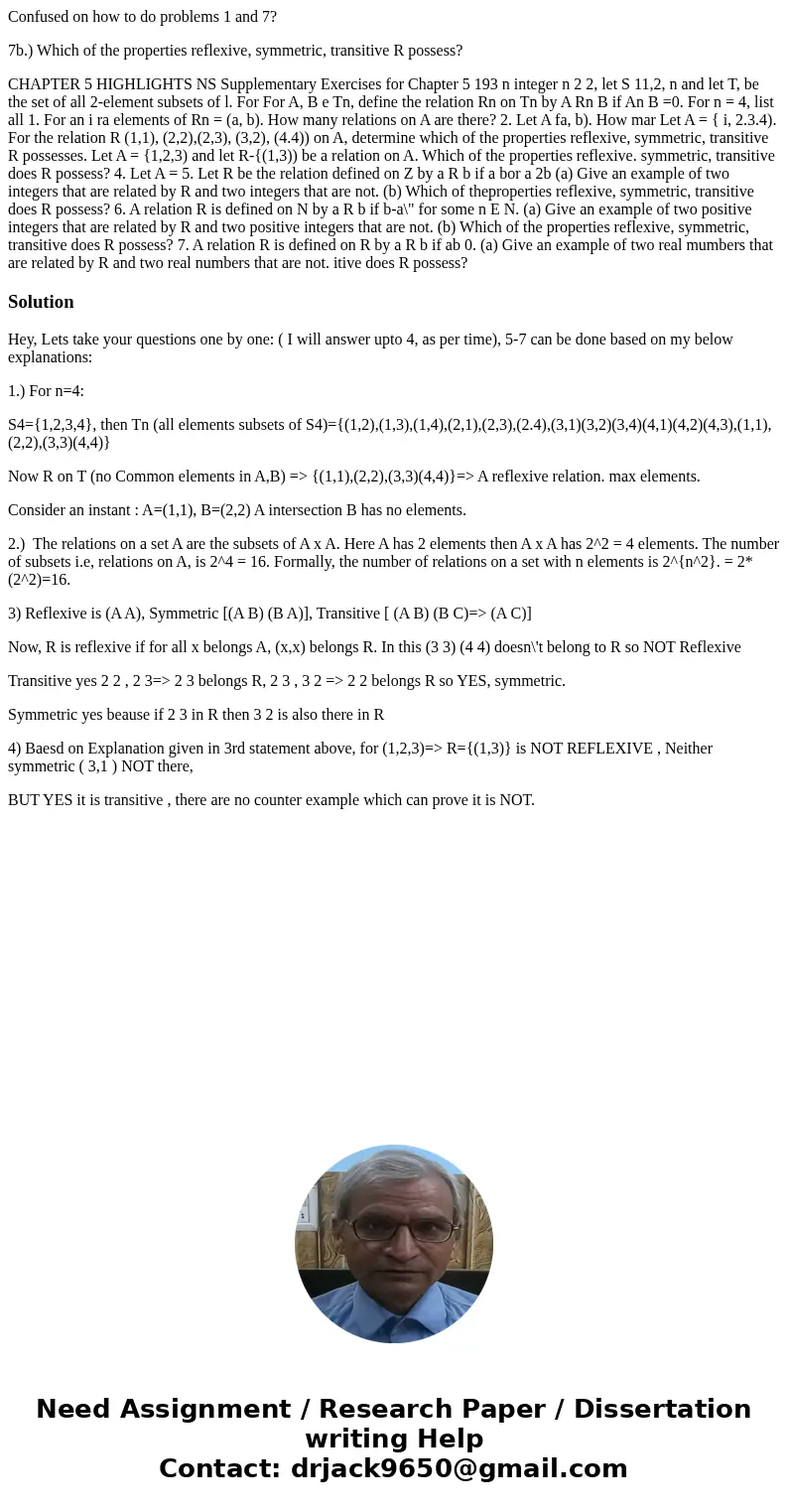Confused on how to do problems 1 and 7 7b Which of the prope
Confused on how to do problems 1 and 7?
7b.) Which of the properties reflexive, symmetric, transitive R possess?
Solution
Hey, Lets take your questions one by one: ( I will answer upto 4, as per time), 5-7 can be done based on my below explanations:
1.) For n=4:
S4={1,2,3,4}, then Tn (all elements subsets of S4)={(1,2),(1,3),(1,4),(2,1),(2,3),(2.4),(3,1)(3,2)(3,4)(4,1)(4,2)(4,3),(1,1),(2,2),(3,3)(4,4)}
Now R on T (no Common elements in A,B) => {(1,1),(2,2),(3,3)(4,4)}=> A reflexive relation. max elements.
Consider an instant : A=(1,1), B=(2,2) A intersection B has no elements.
2.) The relations on a set A are the subsets of A x A. Here A has 2 elements then A x A has 2^2 = 4 elements. The number of subsets i.e, relations on A, is 2^4 = 16. Formally, the number of relations on a set with n elements is 2^{n^2}. = 2*(2^2)=16.
3) Reflexive is (A A), Symmetric [(A B) (B A)], Transitive [ (A B) (B C)=> (A C)]
Now, R is reflexive if for all x belongs A, (x,x) belongs R. In this (3 3) (4 4) doesn\'t belong to R so NOT Reflexive
Transitive yes 2 2 , 2 3=> 2 3 belongs R, 2 3 , 3 2 => 2 2 belongs R so YES, symmetric.
Symmetric yes beause if 2 3 in R then 3 2 is also there in R
4) Baesd on Explanation given in 3rd statement above, for (1,2,3)=> R={(1,3)} is NOT REFLEXIVE , Neither symmetric ( 3,1 ) NOT there,
BUT YES it is transitive , there are no counter example which can prove it is NOT.

 Homework Sourse
Homework Sourse